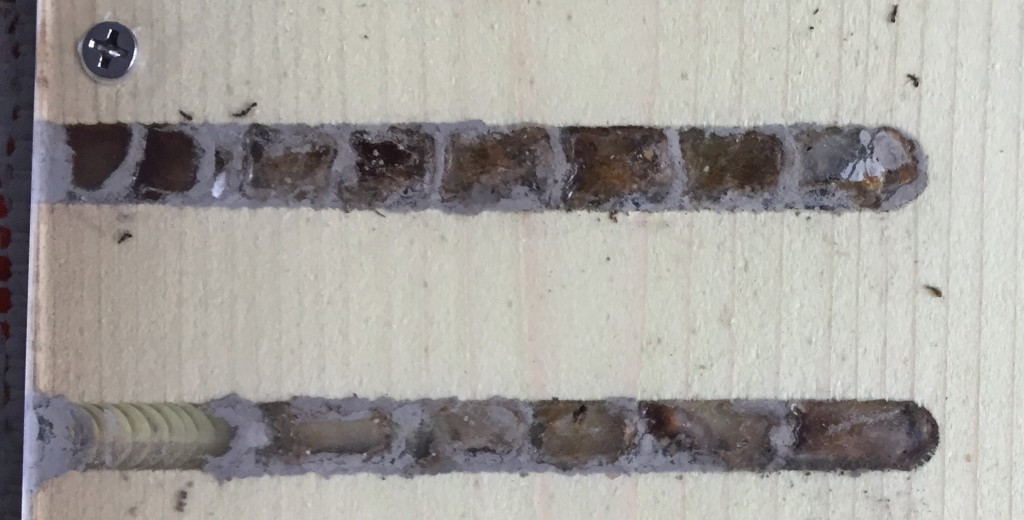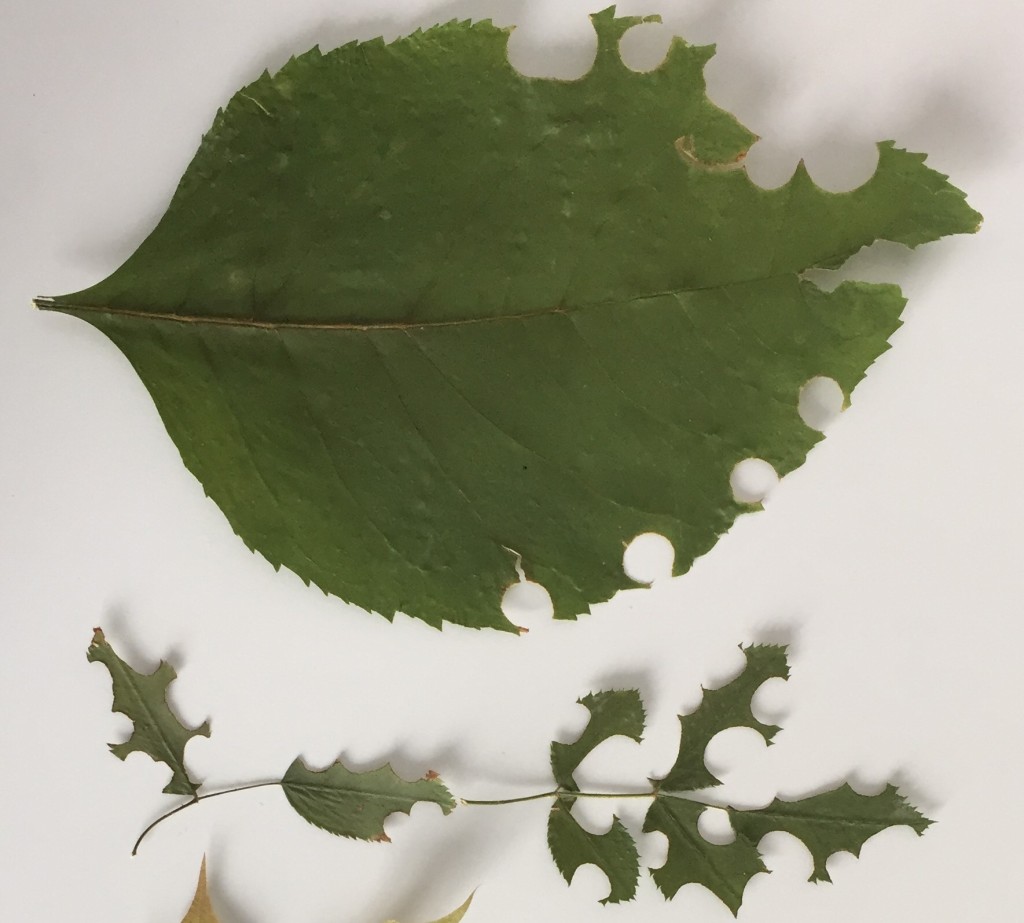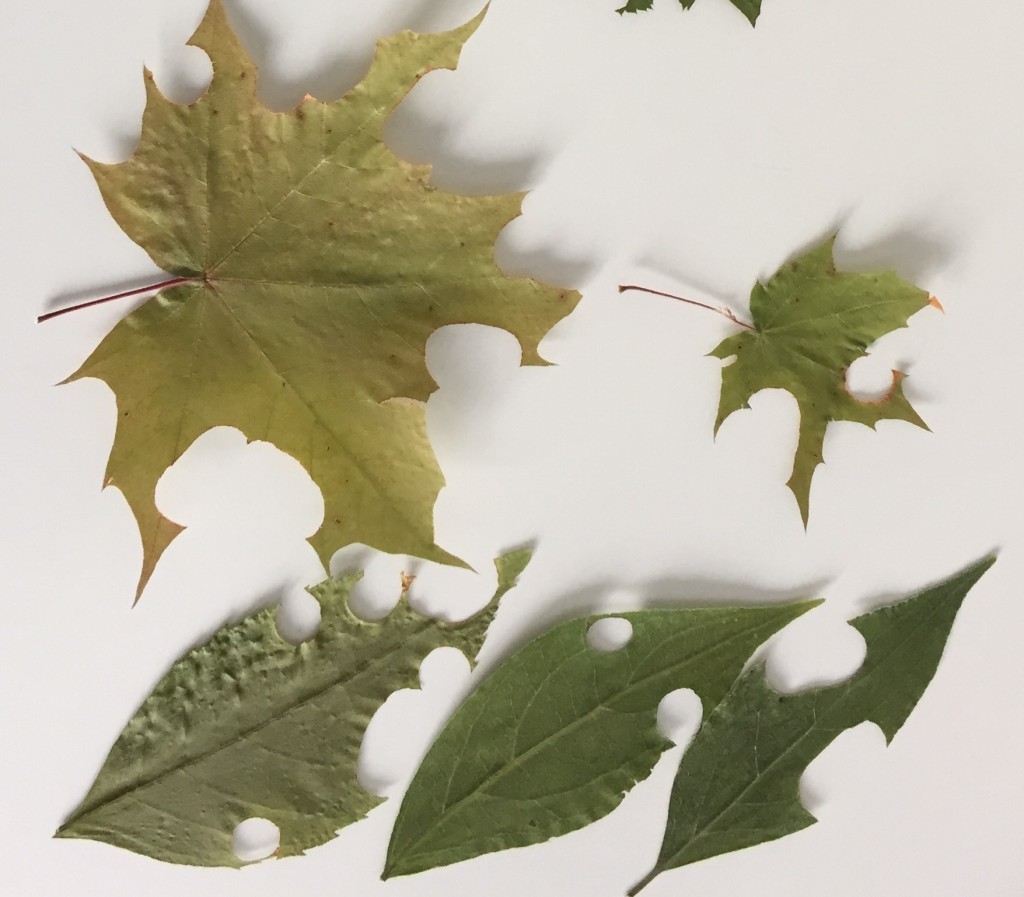Author Heather Holm’s poster Cavity-Nesting Native Bees shows how solitary, cavity-nesting bees make their nests. In my yard, they have used old stems, bamboo stakes, gaps in a dry-stone retaining wall, spaces between cedar roof shingles, and even the metal pipe frame of an old lawn chair.
Artificial bee hotels
For cavity nesting bees, you can include a bee hotel containing hollow stems, or wooden blocks drilled with tunnels.


Resident predatory wasp larvae. These non-threatening, small wasps leave
tiny spiders and caterpillars for their offspring to feed on, instead of pollen. Since the nests aren’t lined with paper, I will need to unscrew the window and
clean the nest once it is vacant. (January 13, 2019)
The more I read, the less confident I become that a bee hotel is a good idea, unless it is constructed properly and you commit to maintaining it. You must replace the tubes or hollow stems each year or two. If you use a wooden block drilled with holes, they need to be lined, the liners must be removed, and the holes cleaned with a bleach solution. You need to keep an eye out for predators, like ants, earwigs, predatory wasps, and so on. There are also parasites that can quickly spread from nest to nest (because they are packed so close together in the hotel), and they will harm the bees you’ve attracted. Some people even bring the cocoons indoors to overwinter in a cool spot. This all sounds like a lot of work.
For information on all the dangers you need to watch out for, see The horrors of mass-produced bee houses, by Colin Purrington, and Pests and Diseases from Crown Bees. Michigan State University Extention has clear instructions for creating and cleaning a bee hotel, called Building and Managing Bee Hotels for Wild Bees. There’s more food for thought on the Garden Myths page Bee Hotels — Do They Really Work?
Leave standing stems as nest sites
I prefer to leave last year’s plant stems cut to 15 inches above the ground as no-maintenance nesting tunnels. Since these are scattered all over the garden, I hope I am avoiding the problems plaguing bee hotels. The stems break down naturally. Some of the kinds of plant stems that bees prefer to use are golden alexanders, coneflowers, joe pye weed, wild senna, milkweed, elderberry, and raspberries.
We watched Small Carpenter bees digging out nests in coneflower stems last summer. The first sign of their activity was a pile of ‘sawdust’ on the leaves below their nests where they had been digging. You can learn more about these interesting little bees by listening to the PolliNation podcast interview with Dr. Sarah Lawson – The small carpenter bee and their Cinderella daughters. Also, The Secret Lives of Native Bees is a TED Talk by Dr. Sandra Rehan about small carpenter bees.
Bees are surprisingly opportunistic and will use all sorts of cracks and holes they find too. We’ve watched leaf-cutter bees making nests in the hollow metal frame of a lawn chair, and between rocks in a stone retaining wall. These bees cut pieces of leaves to line their nests, separate the ‘rooms’ for each larvae, and to plug the entrance from predators. I enjoyed this video from the Toronto Zoo, Leafcutter bee (Megachile relativa) builds a brood cell showing a bee ‘wall-papering’ a nest tube with leaves. They are surprisingly fast at cutting the leaves, as shown in this video by WildlifeWorldUK. Sometimes they have to try a few times to get big leaf pieces into the nest entrance, and its hard not to cheer for them when they finally succeed.

